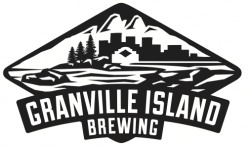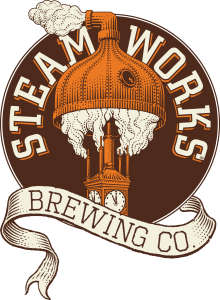
Beer is, perhaps, the oldest fermented beverage known to humankind; and after water and tea, it is the third most popular beverage in the world. These days beer is made from a few key ingredients: water, barley, yeast, and hops. Yet it wasn’t always so. In its thousands of years of history, beer has been made from a range of plants – from burdock to wormwood to yarrow – and, with the growth of microbreweries challenging the status quo, the diversity of ingredients is once more on the rise.
On the evening of January 15th over fifty museum members gathered in the Beaty Biodiversity Museum to learn about the history and biodiversity of beer, and – perhaps more importantly – to practice some applied chemistry by sampling local brews.
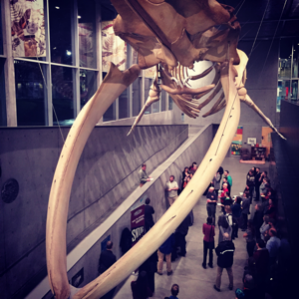
The evening began with everyone gathering under the great blue whale to learn about beer – what better place to explore the pleasures and depths of the drink? Present were familiar and new museum members alike, and beer aficionados including members of the Vancouver Homebrewers Association, CAMRA and the Daughters of Beer.
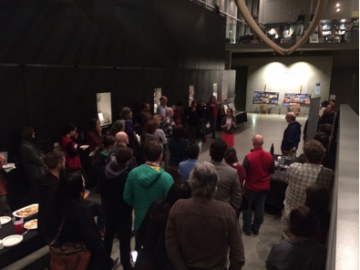
After opening remarks from museum director Darren Irwin, UBC Herbarium Co-Curator of Vascular Plants Linda Jennings and ethnobotanist Saskia Wolsak dove into the history of the beverage and its key ingredients. Saskia described the historical difference between ale and beer – with ale describing the historical beverage made with a multitude of medicinal herbs – as well as the 23,000 year history of the relationship between humans and barley, and the fact that yeast may well be the first cultivated organism. Linda subsequently dove into the botany of the hops vine, noting that hops (Humulus lupulus) is in the same plant family as Cannabis and that the female flowers are both are sought after for their psychoactive chemistry.
After the talk museum members had a peek into some the herbarium cabinets – usually only seen by researchers – and learned more about the collections and the many areas of research they support, from DNA mapping to indigenous knowledge to climate change.
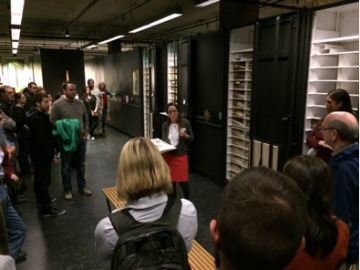
At last it was time to drink. Mike and Nolan from Granville Island Brewing poured generous samples of their citrusy Swing Span Amber Ale and dark malty Auld Skool Scottish Ale, while Steamworks Brewery offered a beautiful and also subtley citrusy Jasmine IPA. Granville Island also had samples of dried hops flowers and kernels of roasted barley so people could dip their noses in and learn more about what they were drinking. The nuances of the flavours took on new significance after learning the history and botany of the plants. After learning that hops is in the Cannabaceae family, for example, several people mentioned that that the hops taste and aroma bore a striking resemblance to its botanical cousin; in the Auld Skool Scottish Ale people remarked on the dark sugars of roasted malted barley, which they now recognized as a grass; and the scent of jasmine in the Steamworks IPA wafted up as hints of a summer’s night captured in a golden effervescence.
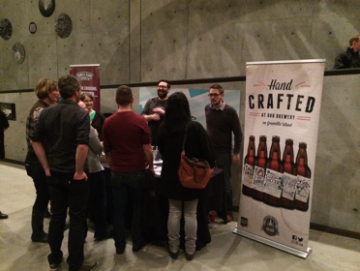
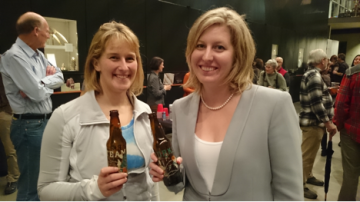
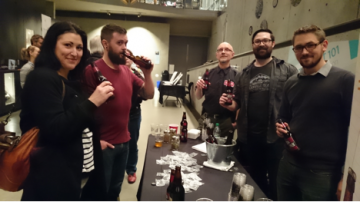
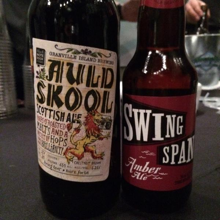
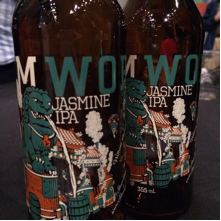
The museum gained many new members that night as the public were drawn to learn about their favourite drink and get a peek into the museum after hours. We’d like to thank all faithful members and patrons for coming out that night, and welcome all new members to the museum community. And thank you especially to Granville Island Brewing and Steamworks Brewery for donating their time, expertise and beer to the event. This won’t be our last foray into the biodiversity of beer, and we hope to see you all next time.
